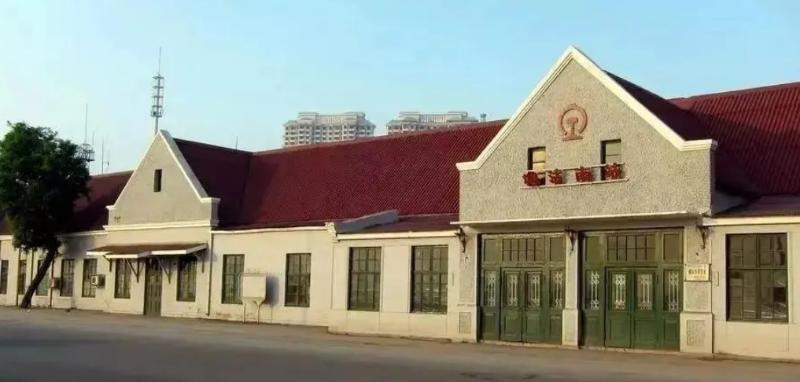Exploring the Cultural Charm of Tanggu Railway Station Site: A Retrospect of a Century of History
The Tanggu Railway Station Site, listed as the seventh batch of national key cultural relics protection units in Binhai New Area, Tianjin, bears the historical memory of China's railway development and stands as an invaluable cultural heritage site. From its developmental history, architectural features, to its honorary title, every detail shines with the brilliance of history.

1. Developmental History
The history of the Tanggu Railway Station Site is rich and varied, filled with the traces of wars, negotiations, and significant events.
- Completion in the 14th year of the Guangxu reign (1888): As one of the earliest independently constructed railway stations on the Beiyang Railway, the Tanggu Railway Station Site witnessed the initial stage of China's railway development.
- Invasion by the Eight-Nation Alliance in 1900: After the Eight-Nation Alliance captured the Dagu Forts, the railway station became an important site for the Alliance to transport military supplies and personnel, undertaking significant military tasks.
- Passing by Mao Zedong and others in 1919: Mao Zedong and Luo Zhanglong escorted French students to study abroad via Tianjin, visiting the Dagu Forts for the first time and boarding trains at the station, leaving a mark in history.
- The 1933 Sino-Japanese Negotiations: During the negotiation of the Tanggu Agreement between China and Japan, the Nanjing government delegation stayed at the Tanggu Railway Station, laying the groundwork for the development of Sino-Japanese relations.
- Occupation by Japanese forces in 1937: The Japanese army occupied the station and used it as a base for transporting war materials, becoming an important military facility during the Chinese War of Resistance against Japanese Aggression.
These historical events have made the Tanggu Railway Station Site a witness to modern Chinese history, with its status and historical value immeasurable.
2. Architectural Features
The architectural features of the Tanggu Railway Station Site showcase the construction techniques and European-style architecture of that time.
- Main Building Structure: A brick and wood structure of European-style single-story buildings, of grand scale and majestic presence. Oriented east-west, with a length of 130 meters north-south and a width of 18 meters east-west, the roof reaches a height of 15 meters, reflecting the grandeur of the era.
- Architectural Style: The influence of European architecture is evident, with pointed roofs, blue brick masonry, white lime plaster, and well-preserved European-style wooden doors and windows, showcasing the architectural style of the time.
- Station Facilities: In addition to the main building, there is a long corridor connecting the passenger waiting room and the platform, supported by 17 square wooden columns and cast iron brackets. These facilities reflect a perfect combination of humanistic care and functional design.
- Iconic Buildings: Apart from the main building, a brick and concrete structure small two-story building has also become one of the iconic buildings of the station, complementing the architectural style of the main building.
These architectural features not only showcase the historical vicissitudes of the Tanggu Railway Station Site but also reflect the social and cultural level and technological achievements of the time.
3. Honorary Title
In May 2013, the Tanggu Railway Station Site was honored to be listed as the seventh batch of national key cultural relics protection units by the State Council of the People's Republic of China. This honor not only affirms its historical value and cultural significance but also shows respect and protection for the historical witnesses.
Q&A
1. What significant historical events are associated with the Tanggu Railway Station Site?
A: The Tanggu Railway Station Site witnessed events such as the invasion by the Eight-Nation Alliance in 1900, Mao Zedong's passage in 1919, the 1933 Sino-Japanese negotiations, and its occupation by Japanese forces in 1937 during the Chinese War of Resistance against Japanese Aggression.
2. What are the architectural features that make the Tanggu Railway Station Site unique?
A: The Tanggu Railway Station Site features a grand European-style single-story brick and wood structure, with distinct architectural elements such as pointed roofs, blue brick masonry, white lime plaster, and well-preserved wooden doors and windows. Additionally, a long corridor connects the passenger waiting room and the platform, supported by wooden columns and cast iron brackets, showcasing a perfect blend of humanistic care and functional design.
note: This return of all, without the author's permission, may not be reproduced